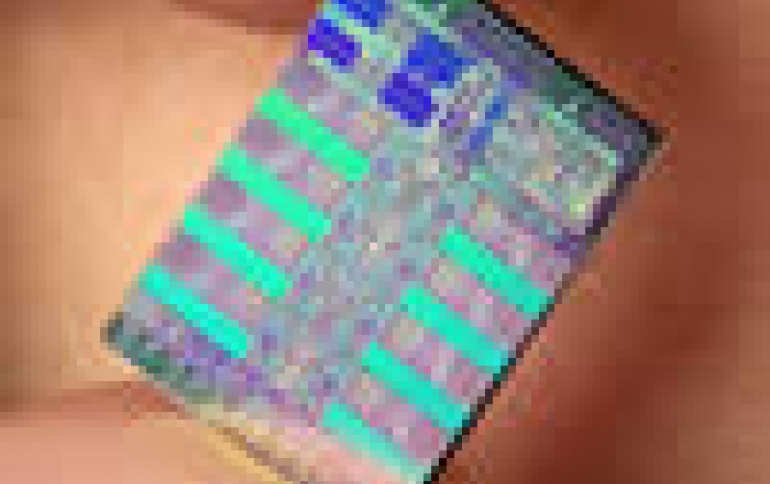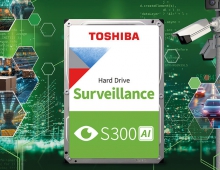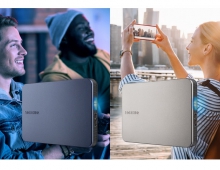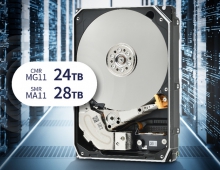
Toshiba Unveils Cell Chip Reference Platform
Toshiba plans to create a development environment for applications based on the Cell microprocessor with the announcement of a Cell Chip Set and a Cell Reference Set development platform.
IBM, Sony and Toshiba have developed the Cell chip that will power the Sony Playstation 3 game console.
Toshiba is currently enabling other companies to develop their own Cell Chip based devices.
The Cell Chip Set is composed of the Cell processor, a Super Companion Chip, the interface between Cell and external audio/visual input/output equipment?and a power supply system chip optimized to drive the Cell microprocessor.
The Cell Reference Set development platform consists of a Cell microprocessor, peripheral chips mounted on a printed circuit board with a general-use interface, peripheral equipment, such as DVD and HDD drives, and cooling equipment required for stable operation, all housed in case. The available software includes operating systems and middleware and software development tools. This combination of hardware and software reduces development costs, cuts turnaround time and simplifies testing.
Toshiba expects to start marketing the chips set and reference set in April 2006 or later, once it has assured supply of the component chips and all related documentation.
Toshiba Corporation will showcase the Cell Chip Set and Cell Reference Set, and demonstrate digital media applications on the Cell Reference Set at the Toshiba booth of CEATEC JAPAN 2005, from October 4 to October 8 at Makuhari Messe.
Outlines of Cell Chip Set and Cell Reference Set:
Cell Chip Set:
Cell microprocessor: Next generation microprocessor jointly developed by IBM, Sony Group and Toshiba. Adopts a multi-core architecture and offers super high-speed data transfer capability. The processor is expected to find application in equipment handling data-rich media applications.
Super Companion Chip: Cell's peripheral LSI, which houses audio and image interfaces supporting Cell's super high-speed data transfer capability. The chip also supports a group of interfaces for various systems (video, audio input/output, digital AV interface, IEEE1394, digital tuner interface) and a group of interfaces that make it easier to connect standard input/output devices (standard bus interface, high speed network interface and storage device interface.)
Power supply system: The supply system is optimized to drive the Cell processor. Includes controller LSI, TB6814FLG, which makes it possible to offer high-speed response and high-accuracy required by Cell. Includes multi-chip module, TB7003FL, which embeds power device in a small 8mm x 8mm package. Realizes small, high-power and high-efficient power supply system which has 4 phases of 1MHz high-speed switches.
Cell Reference Set:
- Development platform for Cell-based, digital consumer products
- High-speed multi-bit wiring technology and wide variety of interfaces that supports broadband system architecture
- Linux and ITRON are both provided on the hypervisor OS that manageshardware resources. This approach facilitates the reuse of application property.
- A development environment including the Eclipse framework based editor, compiler, debugger, and performance monitor.
- An audio-visual application model includes simultaneous multiple digital and analog broadcast television reception, recording and playback.
The Cell Chip Set is composed of the Cell processor, a Super Companion Chip, the interface between Cell and external audio/visual input/output equipment?and a power supply system chip optimized to drive the Cell microprocessor.
The Cell Reference Set development platform consists of a Cell microprocessor, peripheral chips mounted on a printed circuit board with a general-use interface, peripheral equipment, such as DVD and HDD drives, and cooling equipment required for stable operation, all housed in case. The available software includes operating systems and middleware and software development tools. This combination of hardware and software reduces development costs, cuts turnaround time and simplifies testing.
Toshiba expects to start marketing the chips set and reference set in April 2006 or later, once it has assured supply of the component chips and all related documentation.
Toshiba Corporation will showcase the Cell Chip Set and Cell Reference Set, and demonstrate digital media applications on the Cell Reference Set at the Toshiba booth of CEATEC JAPAN 2005, from October 4 to October 8 at Makuhari Messe.
Outlines of Cell Chip Set and Cell Reference Set:
Cell Chip Set:
Cell microprocessor: Next generation microprocessor jointly developed by IBM, Sony Group and Toshiba. Adopts a multi-core architecture and offers super high-speed data transfer capability. The processor is expected to find application in equipment handling data-rich media applications.
Super Companion Chip: Cell's peripheral LSI, which houses audio and image interfaces supporting Cell's super high-speed data transfer capability. The chip also supports a group of interfaces for various systems (video, audio input/output, digital AV interface, IEEE1394, digital tuner interface) and a group of interfaces that make it easier to connect standard input/output devices (standard bus interface, high speed network interface and storage device interface.)
Power supply system: The supply system is optimized to drive the Cell processor. Includes controller LSI, TB6814FLG, which makes it possible to offer high-speed response and high-accuracy required by Cell. Includes multi-chip module, TB7003FL, which embeds power device in a small 8mm x 8mm package. Realizes small, high-power and high-efficient power supply system which has 4 phases of 1MHz high-speed switches.
Cell Reference Set:
- Development platform for Cell-based, digital consumer products
- High-speed multi-bit wiring technology and wide variety of interfaces that supports broadband system architecture
- Linux and ITRON are both provided on the hypervisor OS that manageshardware resources. This approach facilitates the reuse of application property.
- A development environment including the Eclipse framework based editor, compiler, debugger, and performance monitor.
- An audio-visual application model includes simultaneous multiple digital and analog broadcast television reception, recording and playback.





















